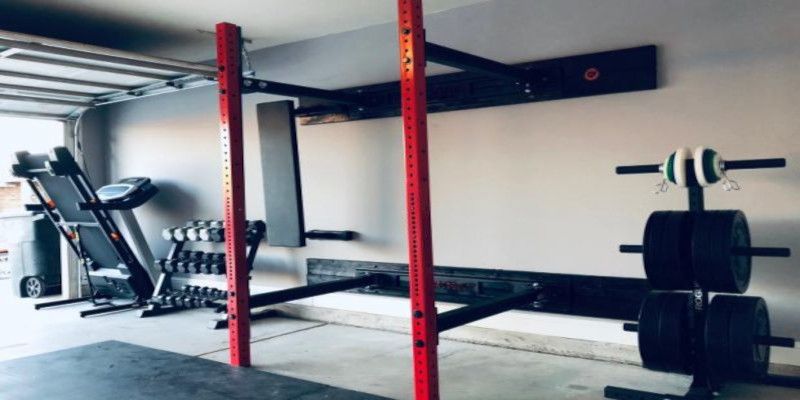Table of Contents
ToggleToday, we will be talking about compound exercises vs isolation exercises, and how each of them should be balanced in a workout program.
Benefits of compound exercises vs. isolation exercises
Benefits of compound exercises
- Allows you to lift heavier weights, leading to bigger strength and muscle gains than isolation exercises would.
- Burns more calories than isolation exercises. (Because you use more muscle groups at the same time.)
- “More bang for your buck” than isolation exercises if you want to perform a full-body workout.
- Improves your joint and muscle balance.
- Improves your cardiovascular performance and health because your heart rate stays high because of the intensity of the compound lifts.
- Decreases your risk of injury while playing sports because you strengthen multiple muscle groups instead of just one creating imbalances in the process.
- Improves your coordination, stability, and reaction time.
- Simulates real-life activities better than isolation exercise, since daily activities rarely consist of using only one joint and muscle group at the same time.
Benefits of isolation exercises
- Correction of a muscle imbalance or weakness.
- Training a specific muscle imbalance after an injury.
- Making a specific muscle stronger or bigger.
What are compound exercises?

A compound exercise is a multijoint exercise that works several muscles at the same time. In other words: multiple joints and their respective muscles are being trained at the same time.
A good example of a compound exercise that almost every person knows is the squat. The squat works the core and leg muscles all at once, including the quadriceps, hamstrings, lower back, and core muscles.
The following study about compound exercises vs isolation exercises found that compound lifts are great strength builders because they use multiple large muscle groups at the same time.
That’s why they’re often used in the gym to gain a solid foundation. Training programs should mainly consist of compound exercises because they lead to bigger strength and mass gains than isolation exercises would.
What are isolation exercises?
An isolation exercise is an exercise that only trains one joint and one muscle at the same time, hence leading to its name “isolation exercise.”
A great example of an isolation exercise is the biceps curl, which we used in our example of the curl bro. The elbow is the only joint being moved and the biceps are the only muscle group being trained when biceps curling.
Isolation exercises are often used in physical rehabilitation to correct a specific muscle weakness or imbalance. They’re also performed to train and strengthen specific body parts that are lagging or to accentuate certain muscle groups.
The difference between isolation and compound exercises
The main difference between isolation and compound exercises is that an isolation exercise targets one specific muscle, while a compound exercise targets multiple muscle groups at the same time.
Examples of compound exercises

Leg compound exercise examples
- Deadlift
- Back squat
- Front squat
- Box squat
- Romanian deadlift
- Leg press
- Dumbbell lunge
Chest compound exercise examples
- Bench press
- Incline bench press
- Decline bench press
- Dumbbell bench press
- Incline dumbbell bench press
- Decline bench press
- Dips
- Weighted dips
Back compound exercise examples

- Bent over barbell rows
- Pulldowns
- Wide grip lat pull downs
- Small grip lat pulldowns
- Reverse grip lat pull down
- Pull-ups
- Wide grip pull-up
- Small grip pull-up
- Weighted pull-up
- Barbell deadlift
Shoulder compound exercise examples
- Standing barbell overhead press
- Standing dumbbell overhead press
- Arnold shoulder press
- Front dumbbell raises
- Lateral raises
Compound exercises you can do at home

There are many compound movements you can do at home depending on the equipment you have in your possession.
Compound exercises at home with equipment
Leg exercises:
- Back squat
- Front squat
- Box squat
- Deadlift
- Romanian deadlift
- Leg press
- Dumbbell lunge
Chest exercises:
- Bench press
- Incline bench press
- Decline bench press
- Dumbbell bench press
- Incline dumbbell bench press
- Decline bench press
- Dips
- Weighted dips
Back exercises:
- Bent over barbell rows
- Pulldowns
- Wide grip lat pull downs
- Small grip lat pull-downs
- Reverse grip lat pull down
- Pull-ups
- Wide grip pull-up
- Small grip pull-up
- Weighted pull-up
- Barbell deadlift
Shoulder exercises:

- Standing barbell overhead press
- Standing dumbbell overhead press
- Arnold shoulder press
- Front dumbbell raises
- Lateral raises
Compound exercises at home without equipment
Leg exercises:
- Body weight squat
- Pistol squats
- Forward lunges
- Reverse lunges
- Good mornings
- Side leg raises
- Glute bridge
Chest exercises:
- Regular push-ups
- Close grip push-ups
- Wide grip push-ups
- Incline push-ups
- Decline push-ups
- Plyometric push-ups
Back exercises:
- Superman
- Squats
- Planking
- Dolphin kicks
- Nose and toes against the wall
- T push-ups
Shoulder exercises:
- Plank walks
- Wall walks
- Incline push-ups
- Incline wall push-ups
- Handstand push-ups
- Pike push-ups
Even without equipment, you can still get a quick and solid workout in by performing compound movements that target large, and multiple muscle groups all at once!
Examples of isolation exercises
Leg isolation exercises examples
- Calf raises
- Leg extensions
- Lying leg curls
- Hamstring curls
Chest isolation exercises examples
- Dumbbell flyes
- Incline dumbbell flyes
- Decline dumbbell flyes
- Bodyweight flyes
Back isolation exercises examples
- Single arm dumbbell row
- Seated back extension
- Cable straight arm pulldown
Shoulder isolation exercises examples
- Dumbbell shrugs
- Barbell shrugs
- Dumbbell lateral raises
- Dumbbell front raises
- Reverse flyes
- Reverse flyes machine
- Car drivers
How many compound exercises are ideal per workout?

How many compound exercises per workout depends on many things such as your goal (training for size, strength, or muscular endurance), how well-trained of an athlete you are, and how fast you recover between each training session.
But as a general guideline, it is recommended to train each muscle group with 2-4 different compound exercises to stimulate growth. Furthermore, hitting each muscle group 2 times a week has been shown to induce better results than training each muscle group just once a week.
If you’re training for muscular endurance and hypertrophy, then you mostly want to perform more compound exercises to get more volume in your workout program.
For strength, fewer compound exercises with heavy weights seem to produce the best results. Most likely because you’re going much closer to failure, and because those heavy loads sap the body of energy much quicker than lower weights do.
Final note

Compound and isolation lifts both have their pros and cons. There is however no reason we can’t combine the two lifts for maximum effect.
The main bulk of your training program should consist of compound exercises. I would say around 70-80% of the exercises in a training program should be compound lifts.
Compound lifts should be performed first in your training program because you can lift much heavier loads with compound exercises than with isolation exercises. This means that it’s best to perform these lifts first when your body is still fresh and well-rested.
Isolation lifts should be performed at the end of your workout program. That’s because they’re used to working on specific weak points.


